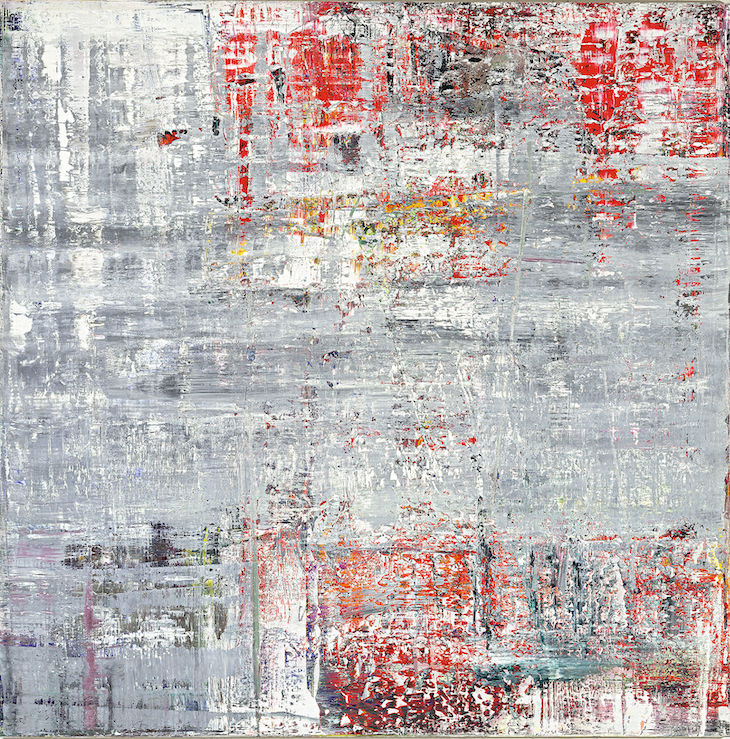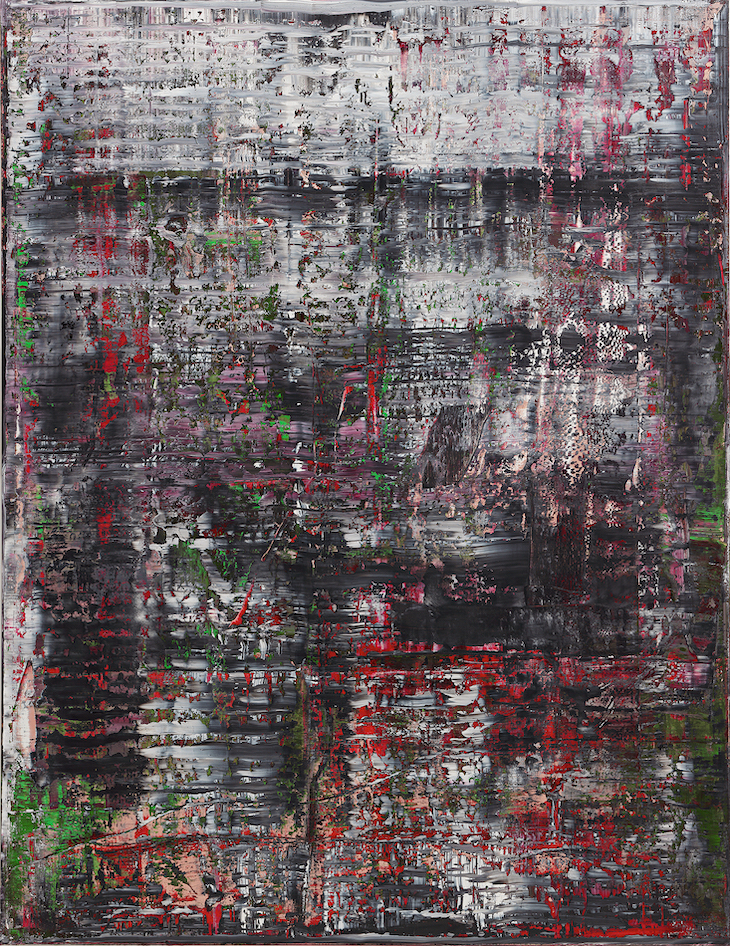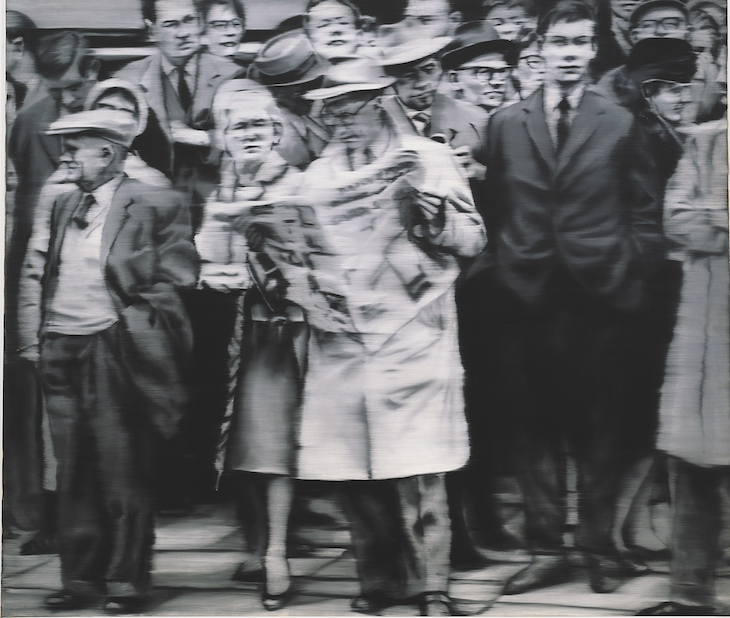While this wide-ranging show is not a retrospective, Gerhard Richter has said that it is likely to be his last major museum exhibition and, at 88, he was not well enough to travel to its opening in early March. It was intended as the Met Breuer’s final big show before the Frick takes over the building, the culmination of an ambitious programme exploring the practice of contemporary artists. I saw it on 10 March, with the complete lockdown of New York only days away, and it was hard to shake off the sense of some greater closing down, the finality to which a last exhibition must speak.
But ‘Gerhard Richter: Painting After All’ did not feel like a leave-taking or swansong. Sheena Wagstaff, who curated the exhibition with Benjamin Buchloh and Brinda Kumar, writes in her introduction to the catalogue that they wanted their title to capture Richter’s assertion that, in his words, ‘painting is one of the most basic human capacities […] that make sense, that stay with us, as something human.’ ‘It is painting, after all,’ she proposes, ‘that endures.’ Few artists, to be sure, have had a more committed sense of being after something – following events of national and personal significance, but also pursuing the past and attending to the need to remember it. The paintings, engaged with history and memory as they are, look to what comes next because something always will, if art can fulfil the purpose Richter seems to assign to it.
Cage 4 (2006), Gerhard Richter. © Gerhard Richter 2020

The two-floor survey at the Met Breuer contains some 100 works spanning Richter’s entire career. The selection emphasises the artist’s restlessly inventive practice as much as his recurring engagements with history. Some works have not been shown before in America, including Cage (2006), a series of abstracts paying homage to John Cage’s chance procedures, and the sombre Birkenau series of four paintings and their digital copies that dominates the final room (2014).
At once the exhibition’s end point and its conceptual point of departure, these four massive and muted abstracts are Richter’s response to the four tiny photos that have haunted him since the 1950s. Taken surreptitiously by an anonymous member of the Sonderkommando (prisoner work unit), they capture the casual horror of the death camp in action – ‘Four Pieces of Film Snatched from Hell’, as Georges Didi-Huberman described them in Images in Spite of All (published in English in 2008), in which Richter encountered them again. In his now familiar process of defamiliarisation, the artist traced the outlines of the image as projected on to canvas before covering them with layer after layer of striated paint, which took on a shape and force of its own.
Birkenau (2014), Gerhard Richter. © Gerhard Richter 2020

Birkenau is encountered after works that touch on the place where personal experience and public history meet. It comes after portraits and self-portraits, street scenes, landscapes and seascapes; after colour strips and grids; after the 31 small monotypes of the Elbe series (1957), exquisitely crafted from chance procedures with a small roller unevenly loaded with ink. It comes after large glass works, including his first piece in that medium, 4 Panes of Glass (1967), and his most recent, the vertiginous and startlingly beautiful installation House of Cards (5 Panes) (2020). And it comes after trees, a whole room of them in the 12-part series Forest (2005), which recalls the landscape in which the death camps were set and echoes the blurry branches seen in two of the four Sonderkommando photos and anticipate Gray (Bark) (1973), the small and early painting that sits alongside the Birkenau abstracts. So while there is a sense in which the exhibition culminates in the Birkenau room and another in which it oscillates around it, there is yet another sense in which what we pass through on our way to that birchwood clearing informs our understanding of what it is that Richter is after.
Group of People (1965), Gerhard Richter. © Gerhard Richter 2020

By the time we make it to the final room we have also seen the film Gerhard Richter Painting (2012) by Corinna Belz, in which we catch sight of a framed copy of one of the Birkenau photographs above the desk in Richter’s studio, and watch the artist drawing a huge squeegee – an unwieldy tool that both covers and excavates the surface – across fields of colour, as if ploughing or hauling a net or settling the level of cement. We know now that Richter is always working with an eye to what’s ahead, through the ever-present, where production through destruction, where life through death, is the only possible response.
For Hannah Arendt, who escaped Nazi Germany and settled in New York in 1941, the human capacity to start again (and again) was nothing short of miraculous, as she asserted in her book The Human Condition (1958). But it is her essay, ‘What is Freedom?’, that takes us closest to the painter’s achievement:
What usually remains intact in the epochs of petrification and foreordained doom is the faculty of freedom itself, the sheer capacity to begin, which animates and inspires all human activities and is the hidden source of production of all great and beautiful things.
For Richter, art’s function is to survive this world in which we find ourselves: it is ‘the measure of all the unfathomable, senseless things, the incessant ruthlessness of our world’. And so we leave the birchwood and go back to the beginning again, and remember that the exhibition starts with Table (1962) – the cover image for the catalogue and the first work discussed in its introduction. Richter’s smeared photo-based painting was the first piece he made in West Germany and marks, as he puts it, the place where he drew a line between past and future. It is the table, after all, that has always been the setting for still life, and also the place where we eat, plan and talk. Richter’s image is partially erased, on its way towards a new start; and an imperfectly erased space may be the only place we have in which to work, to live and to survive. The only finality is to have no place in which to begin again.
‘Gerhard Richter: Painting After All’ was at the Met Breuer from 4 March until the museum closed as a Covid-19 precaution on 12 March. While the Met is scheduled to reopen on 29 August, the Met Breuer will not; the Breuer building will become a temporary home for the Frick Collection.
From the June 2020 issue of Apollo. Preview and subscribe here.



